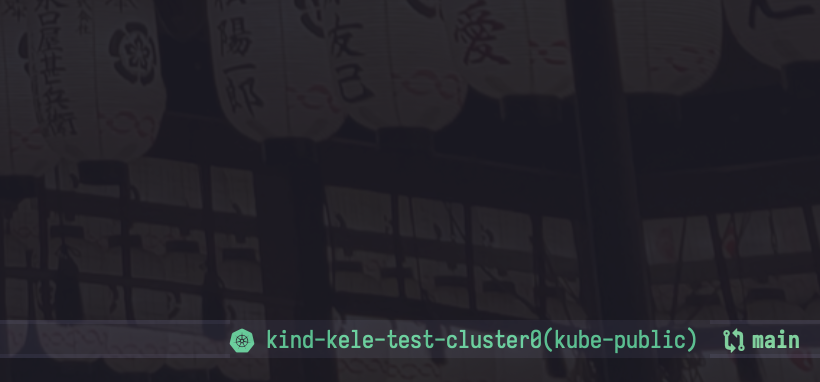🥤 kele.el (Kubernetes Enablement Layer for Emacs)
Kele (kě lè, or kə-ˈlə) (“Kubernetes Enablement Layer for Emacs”) is a Kubernetes cluster management package. It empowers you to perform operations as coarse or fine-grained as you need, fast, and get back to your work.
With Kele, you can:
- Manage contexts, e.g. switching, renaming, changing the default namespace;
- Fetch and display the manifest of a single resource;
- List collections of resources;
- Start and stop proxy servers;
- Use the menu bar to perform basic cluster/config management;
- Add an interactive modeline indicator with
doom-modeline; - And more!
See How-Tos > Usage for more details on what’s possible with Kele.



Tip
To learn more about how Kele compares to some other Kubernetes packages for Emacs, see: Explanations > Comparisons with Similar Packages/Tools.
Note
Kele is not an official Kubernetes project.
Getting Started
Kele requires Emacs 28.1+.
(use-package kele
:config
(kele-mode 1)
(bind-key (kbd "s-k") kele-command-map kele-mode-map))
Design Ethos
Kele aims to have PLANS. Namely, it aims to be:
- Performant: if it is easier/faster for you to simply use
kubectlto get the info you need instead of Kele, then Kele has failed; - Lightweight: minimally intrusive, minimize context-switching, keep “embellishments” to a minimum;
- Agile: get you the answers you need – and let you return to your other work – as quickly as possible;
- Nimble: get you as coarse/detailed insight as needed at any given point, with no compromise to any of the other tenets listed here;
- Smart: provide sensible defaults and interfaces that “just make sense”.
About the Name
The name Kele comes from the Mandarin term for cola, 可乐 (kě lè). It is also an abbreviation of “Kubernetes Enablement Layer for Emacs.”
